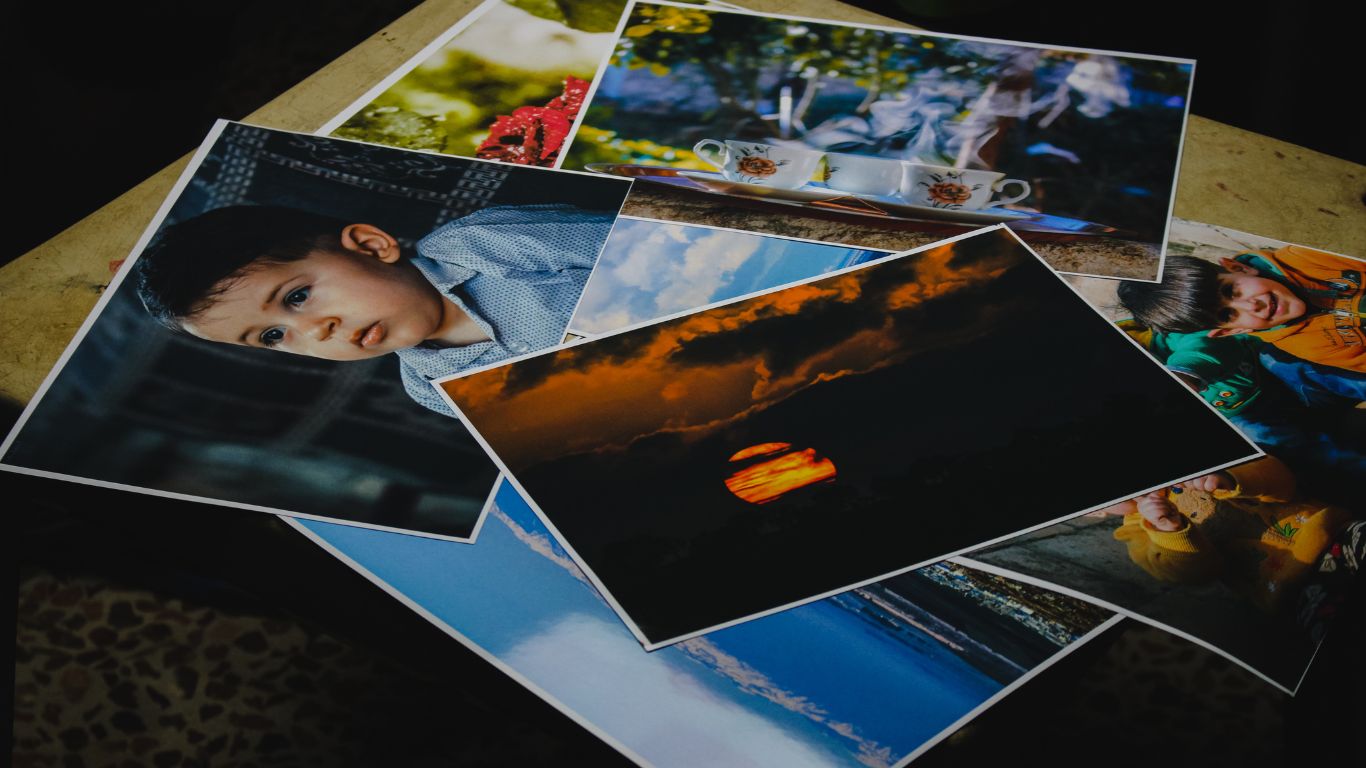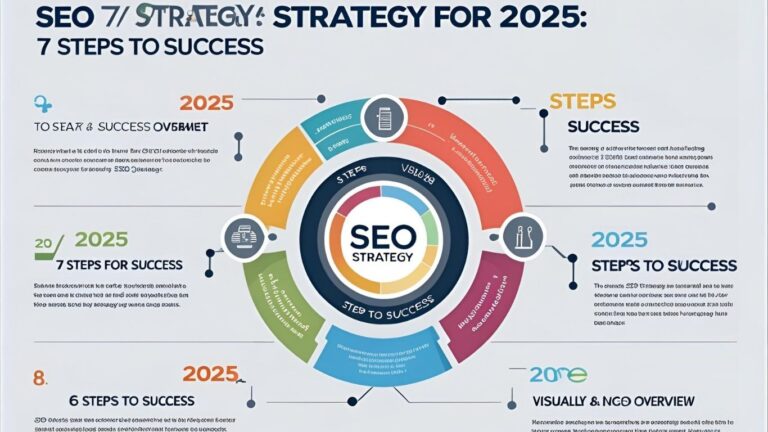How to Optimize Images: 7 Step-by-Step Tips for Enhanced SEO and User Experience #SEO #WebDesign #UserExperience
Brief
Optimizing images is crucial for enhancing both user experience and SEO. How to Optimize Images: 7 Step-by-Step Tips reveals essential strategies to ensure your visuals are both high-quality and fast-loading. This guide provides actionable steps to improve image performance, including selecting the right file formats, compressing images effectively, and leveraging alt text for SEO. By following these tips, you’ll not only improve your site’s speed but also boost its visibility on search engines. Whether you’re a beginner or looking to refine your skills, these techniques will help you achieve optimal results effortlessly. Get ready to enhance your website’s user engagement and SEO with ease!
How to Optimize Images: 7 Step-by-Step Tips
In today’s digital landscape, knowing how to optimize images is not just beneficial; it’s essential. If you’ve ever wondered why your website loads slowly or why it doesn’t rank well on search engines, the culprit could very well be your images. Optimizing images can significantly boost both your user experience and SEO performance. This guide will walk you through 7 step-by-step tips to ensure your images are not only visually appealing but also contribute positively to your website’s performance and visibility.
Why Image Optimization Matters
Before we dive into the technical aspects, let’s discuss why image optimization matters. In a world where speed is king, images often account for a large portion of a webpage’s load time. This means that unoptimized images can drastically slow down your site, leading to a poor user experience and negatively impacting your SEO rankings. So, why does this happen?
Enhanced User Experience
When users visit your site, they expect it to load quickly. Imagine someone walking into a store; they want to find what they’re looking for without delay. The same principle applies online. If your site takes too long to load because of large, unoptimized images, users might leave before they’ve even had a chance to explore. Faster load times lead to better user satisfaction, lower bounce rates, and ultimately, more conversions.
Plus, optimized images look sharp and professional, creating a positive first impression. Whether you’re running an eCommerce store, a blog, or a portfolio site, high-quality, fast-loading images are key to keeping your audience engaged.
Improved SEO Performance
Search engines like Google prioritize fast-loading websites. If your site loads slowly due to heavy images, your rankings can suffer, making it harder for potential visitors to find you. Moreover, search engines also look at image alt text and file names to understand the content of your images. By optimizing these elements, you can improve your chances of ranking higher in image search results, driving more traffic to your site.
But here’s the good news: with the right techniques, you can optimize your images without sacrificing quality, ensuring your site is both user-friendly and search engine-friendly. So, let’s get started on learning how to optimize images effectively.
Choosing the Right File Formats
The first step in learning how to optimize images is choosing the right file format. This might seem trivial, but the format you choose can significantly impact both the quality and size of your images.
JPEG vs. PNG
When it comes to web images, JPEG and PNG are the two most common formats. Each has its strengths and weaknesses, and the right choice depends on the type of image you’re working with.
JPEG (Joint Photographic Experts Group) is best suited for photographs and complex images with many colors. It uses lossy compression, which reduces file size by discarding some image data. This can lead to a slight reduction in quality, but the smaller file size often makes the trade-off worth it for web use.
On the other hand, PNG (Portable Network Graphics) is ideal for images that require transparency, such as logos or graphics with text. PNG uses lossless compression, meaning no data is lost during compression. The result is a higher-quality image, but with a larger file size compared to JPEG.
WebP Format Advantages
If you’re looking for a more modern solution, WebP is worth considering. This relatively new format offers superior compression compared to both JPEG and PNG, often resulting in smaller file sizes without compromising quality. WebP supports both lossy and lossless compression, as well as transparency, making it a versatile option for web images. By switching to WebP, you can reduce your image load times significantly, improving both user experience and SEO.
To implement WebP, you’ll need to ensure your website is configured to serve these images to browsers that support them while falling back to JPEG or PNG for those that don’t. This might sound complex, but many content management systems (CMS) and image optimization plugins can handle the conversion and delivery for you.
Choosing the right file format is the foundation of how to optimize images, and getting it right sets the stage for further optimization steps.
Compressing Images Effectively
After choosing the appropriate format, the next step in learning how to optimize images is to compress them. Image compression reduces file size, leading to faster load times and improved SEO without a noticeable loss in quality. But how do you compress images effectively?
Lossy vs. Lossless Compression
There are two main types of image compression: lossy and lossless.
Lossy compression reduces file size by permanently removing some image data. This results in smaller files but can lead to a decrease in image quality. However, the quality loss is often imperceptible to the naked eye, making lossy compression a popular choice for web images.
Lossless compression, on the other hand, reduces file size without losing any image data. This means the image quality remains intact, but the file size reduction is generally less significant compared to lossy compression. Lossless compression is ideal for images where quality is paramount, such as logos or illustrations.
Both types of compression have their place in your image optimization strategy. For photographs and complex images, lossy compression is usually sufficient. For simpler images or those requiring transparency, lossless compression might be the better choice.
Tools and Software
Now, you might be wondering, “How do I compress my images?” Fortunately, there are plenty of tools and software available that make the process easy.
Adobe Photoshop is a go-to for many designers, offering advanced compression options. If you don’t have access to Photoshop, TinyPNG and ImageOptim are excellent free alternatives that provide high-quality compression with minimal effort. These tools allow you to compress images in bulk, saving time while ensuring all your images are optimized for the web.
If you’re using WordPress, several plugins like Smush and ShortPixel automatically compress images as you upload them, streamlining the optimization process. These plugins often support both lossy and lossless compression, giving you the flexibility to choose the best method for your needs.
Compressing your images is a crucial step in how to optimize images, as it directly impacts your website’s speed and performance.
Utilizing Alt Text for SEO
When discussing how to optimize images, we can’t overlook the importance of alt text. Alt text, or alternative text, is a short description of an image that helps search engines understand its content. This is crucial for improving your image SEO and making your site accessible to all users.
Importance of Descriptive Alt Text
Alt text plays a significant role in SEO because it gives search engines context about your images. This can improve your rankings in image search results, driving more organic traffic to your site. But it’s not just about SEO—alt text is also essential for accessibility. Users who rely on screen readers to browse the web will hear the alt text read aloud, helping them understand the content of the image.
For example, if you have an image of a chocolate cake, the alt text might read, “Delicious homemade chocolate cake with rich frosting.” This description not only tells search engines what the image is about but also provides valuable information to users with visual impairments.
Best Practices for Alt Text
Writing effective alt text is both an art and a science. Here are some best practices to follow:
- Be Descriptive: Your alt text should clearly describe the image. Include relevant details that provide context, but avoid being overly verbose.
- Use Keywords Naturally: While it’s important to include keywords, they should fit naturally within the text. Keyword stuffing can be counterproductive, leading to penalties from search engines.
- Keep It Concise: Aim for alt text that’s informative but brief—typically around 125 characters or less. This ensures that your text is succinct and easy to understand.
By following these guidelines, you can create alt text that enhances your SEO and accessibility efforts, making it a key part of how to optimize images.
Resizing Images for Optimal Display
Resizing images is another critical aspect of how to optimize images. Even the most beautifully optimized image won’t look good if it’s displayed at the wrong size. Properly resizing images ensures they display correctly across all devices, contributing to a smooth and professional user experience.
Responsive Design
In today’s multi-device world, your images need to be responsive—meaning they should adapt to different screen sizes and resolutions without losing quality. This is especially important for mobile users, who might be accessing your site on a smaller screen.
Responsive design isn’t just about resizing images; it’s about ensuring they load quickly and look great on any device. By using techniques like CSS media queries and responsive images, you can ensure your site looks sharp and functions well, no matter what device your visitors are using.
Aspect Ratio Considerations
When resizing images, it’s crucial to maintain the correct aspect ratio—the relationship between an image’s width and height. If you alter the aspect ratio during resizing, you risk distorting the image, making it look stretched or squished.
Most image editing tools, including those mentioned earlier, allow you to lock the aspect ratio when resizing images. This ensures that the image maintains its original proportions, preventing any distortion.
For example, if you’re resizing an image from 1000×500 pixels to 500×250 pixels, the aspect ratio remains the same, and the image looks just as it should, only smaller. Resizing images correctly is a fundamental part of how to optimize images, ensuring they enhance rather than detract from your site’s overall design.
Leveraging Image Caching
Now that you’ve chosen the right file format, compressed your images, and ensured they’re properly sized, it’s time to consider image caching. Caching is a technique that stores copies of your images on a user’s device, reducing the need to download them again on subsequent visits. This can dramatically improve your site’s load times, particularly for returning visitors.
How Caching Works
When a user visits your site, their browser downloads the images and stores them in a cache. On their next visit, the browser can load the images from the cache instead of downloading them again. This reduces the time it takes for your site to load, creating a smoother and faster experience.
To implement caching, you’ll need to adjust your server settings or use a caching plugin if you’re on a platform like WordPress. These tools allow you to set cache expiration times, determining how long images are stored before they’re refreshed.
CDNs and Caching
Using a Content Delivery Network (CDN) can further enhance your caching strategy. A CDN stores copies of your images on multiple servers around the world, delivering them from the server closest to the user. This not only speeds up load times but also reduces the load on your main server, improving your site’s overall performance.
By leveraging caching and CDNs, you can ensure your images load quickly and efficiently, even for users on slower connections. This is an advanced but essential part of how to optimize images, particularly for larger websites with significant traffic.
Implementing Lazy Loading
One of the more advanced techniques in how to optimize images is lazy loading. Lazy loading is a strategy where images are only loaded when they enter the viewport—meaning, they only load when a user scrolls down to see them. This can significantly reduce initial load times, especially on pages with lots of images.
Why Lazy Loading Matters
Lazy loading can be a game-changer for your site’s performance. By deferring the loading of off-screen images, you reduce the amount of data that needs to be loaded initially, speeding up page load times. This is particularly beneficial for mobile users, who might be on slower connections.
In addition to improving load times, lazy loading can also reduce bandwidth usage, which is especially important for users with limited data plans. By only loading images when necessary, you ensure that your site is both fast and data-efficient.
How to Implement Lazy Loading
Implementing lazy loading can be done through JavaScript or by using plugins if you’re on a platform like WordPress. Modern browsers are also starting to support lazy loading natively, making it easier than ever to implement.
For example, the loading="lazy" attribute can be added to your image tags in HTML to enable lazy loading. This simple addition can have a significant impact on your site’s performance, making it a must-have technique in your image optimization toolkit.
By incorporating lazy loading, you can ensure that your images load efficiently, improving both user experience and SEO—key elements in how to optimize images.
Utilizing Image Sitemaps
Another advanced strategy in how to optimize images is using image sitemaps. While most people are familiar with sitemaps for their web pages, image sitemaps are often overlooked. However, they can play a crucial role in helping search engines index your images, improving your visibility in search results.
What is an Image Sitemap?
An image sitemap is a file that provides information about the images on your site, helping search engines like Google find and index them. This can be particularly useful if your images are loaded via JavaScript or located in areas of your site that are hard for search engines to crawl.
By creating an image sitemap, you give search engines a roadmap to your images, increasing the chances that they’ll appear in image search results. This can drive more traffic to your site, particularly if you’re in a visually-driven industry like eCommerce or photography.
How to Create an Image Sitemap
Creating an image sitemap is similar to creating a regular sitemap. If you’re using WordPress, plugins like Yoast SEO can automatically generate an image sitemap for you. If you’re manually creating one, you’ll need to list the URLs of your images in an XML file and submit it to search engines through tools like Google Search Console.
An image sitemap is an advanced but powerful tool in how to optimize images, ensuring that all your hard work on image optimization doesn’t go unnoticed by search engines.
Incorporating Structured Data
Structured data, or schema markup, is another advanced technique in how to optimize images. By adding structured data to your images, you provide search engines with additional context, improving the chances that your images will appear in rich results.
What is Structured Data?
Structured data is a standardized format that allows you to provide specific information about your images to search engines. This can include details like the image’s subject, its dimensions, or the creator. When search engines understand this data, they can display your images more prominently in search results, often with additional information like captions or credits.
For example, if you run a recipe blog, adding structured data to your images can help them appear in rich results for recipes, complete with images, ratings, and cooking times. This can significantly increase your visibility in search results, driving more traffic to your site.
How to Implement Structured Data
Implementing structured data can be done using tools like Google’s Structured Data Markup Helper or by manually adding the necessary code to your HTML. If you’re using a CMS like WordPress, plugins like Schema Pro can simplify the process, allowing you to add structured data without any coding.
By incorporating structured data into your images, you can enhance your SEO efforts, making it a key strategy in how to optimize images.
Optimizing Image Load Order
The order in which your images load can have a significant impact on user experience and site performance. Understanding how to optimize images involves not just optimizing individual images but also optimizing how they load.
Prioritizing Critical Images
Not all images on your site are created equal. Some, like your logo or hero image, are critical to the user experience and should load first. Others, like images further down the page, can afford to load a bit later.
To prioritize critical images, you can use techniques like preloading, which tells the browser to load these images as soon as possible. This ensures that the most important visual elements are displayed quickly, improving the perceived load time and user experience.
Defer Non-Essential Images
For images that aren’t immediately visible when the page loads, consider deferring their load until they’re needed. This can be done through techniques like lazy loading, which we discussed earlier, or by using JavaScript to load these images after the initial page load.
By carefully managing the load order of your images, you can create a more seamless and efficient user experience, an essential part of how to optimize images for both performance and SEO.
Regularly Auditing Your Images
Even after you’ve optimized your images, it’s essential to regularly audit them to ensure they continue to perform well. Image optimization is not a one-time task; it requires ongoing attention to keep your site running smoothly.
Tools for Image Auditing
Several tools can help you audit your images and identify areas for improvement. Google PageSpeed Insights and GTmetrix are popular options that analyze your site’s performance and provide recommendations for optimizing your images.
During an audit, look for images that are too large, not properly compressed, or missing alt text. Addressing these issues can improve your site’s speed and SEO, ensuring that your images continue to contribute positively to your site’s performance.
Updating Alt Text and File Names
As part of your audit, review your alt text and file names to ensure they’re still relevant and optimized for your target keywords. Over time, your content strategy may evolve, and updating these elements can help keep your images aligned with your SEO goals.
Regularly auditing your images is a critical step in how to optimize images, ensuring that your site remains fast, user-friendly, and search engine-friendly.
Monitoring Image Performance
After implementing all these optimization techniques, it’s important to monitor the performance of your images to ensure they’re delivering the desired results. This final step in how to optimize images helps you track your progress and make any necessary adjustments.
Tracking Metrics
Use tools like Google Analytics to track metrics related to image performance, such as page load times, bounce rates, and conversion rates. These metrics can give you insights into how well your optimized images are performing and whether further tweaks are needed.
For example, if you notice a high bounce rate on a particular page, it might be worth investigating whether unoptimized images are causing slow load times. By analyzing these metrics, you can make informed decisions about further optimizations.
A/B Testing
A/B testing can be a powerful tool for fine-tuning your image optimization strategy. By testing different versions of an image—such as different file formats or compression levels—you can see which version performs best in terms of load time and user engagement.
A/B testing can also help you determine the best approach for alt text, file names, and other SEO elements, allowing you to continuously improve your image optimization efforts.
Monitoring your image performance is the final step in mastering how to optimize images, ensuring that your efforts lead to tangible improvements in site speed, SEO, and user experience.
Conclusion
Optimizing images is more than just reducing file sizes; it’s about creating a seamless and efficient user experience while boosting your SEO efforts. From choosing the right file formats and compressing images to implementing advanced techniques like lazy loading and structured data, each step plays a crucial role in improving your site’s performance and visibility.
Remember, image optimization is an ongoing process. Regularly audit your images, monitor their performance, and make adjustments as needed to ensure your site remains fast, user-friendly, and search engine-friendly.
By following these steps, you can master how to optimize images effectively, ensuring your website not only looks great but also performs at its best. Whether you’re a seasoned webmaster or a beginner, these strategies will help you take your image optimization to the next level, driving more traffic, improving user engagement, and ultimately, boosting your site’s success.
Blog Post Summary
- Importance of Image Optimization: Image optimization is crucial for enhancing user experience and improving SEO performance on your website.
- Choosing the Right File Format: Different image formats like JPEG, PNG, and WebP offer various benefits; selecting the right one is key to balancing quality and performance.
- Compressing Images: Properly compressing images without compromising quality can significantly reduce load times and improve page speed.
- Using Descriptive Alt Text: Alt text enhances accessibility and provides search engines with context, which helps in better ranking.
- Naming Images for SEO: Use relevant, descriptive file names that include keywords to improve image SEO.
- Responsive Images: Ensuring images adapt to different screen sizes enhances user experience across all devices.
- Utilizing Caching: Caching images can speed up load times for returning visitors by storing copies on their devices.
- Implementing Lazy Loading: Lazy loading defers the loading of images until they are needed, improving initial page load times.
- Creating Image Sitemaps: Image sitemaps help search engines index images more effectively, boosting their visibility in search results.
- Incorporating Structured Data: Adding structured data to images can improve how they appear in search results, potentially leading to richer search results.
- Optimizing Image Load Order: Prioritizing the loading of critical images and deferring non-essential ones enhances page performance.
- Regularly Auditing Images: Ongoing audits ensure images remain optimized, contributing to site speed and SEO.
- Monitoring Image Performance: Use tools like Google Analytics to track how well your images perform and make necessary adjustments.
Social Media Blurb
“Boost your website’s performance and SEO with our ultimate guide to image optimization! Learn how to choose the right formats, compress files, and implement advanced techniques like lazy loading and structured data. Don’t miss out on these essential tips to make your site faster and more search engine-friendly! #ImageOptimization #SEO #WebDesign”
Tags:
How to Optimize Images, Image Compression, Lazy Loading, SEO for Images, WebP Format, Alt Text for SEO, Responsive Images, Image Sitemaps, Structured Data for Images, Website Load Time, Caching Images, Content Delivery Network (CDN), Image File Naming, Mobile Image Optimization, A/B Testing for Images
FAQs on How to Optimize Images for Better User Experience and SEO
Q1: Why is image optimization important for SEO?
Image optimization is crucial for SEO because search engines like Google consider page load times, user engagement, and content relevance when ranking websites. Images that are too large or not properly optimized can slow down your website, leading to higher bounce rates and lower rankings. By optimizing images—through compression, proper file naming, and adding alt text—you improve your site’s speed and make it easier for search engines to understand your content. This can lead to better visibility in search results, higher traffic, and an overall improved user experience, which are all essential for SEO success.
Q2: What is the best file format to use for web images?
The best file format for web images depends on the type of image and its use case. JPEG is ideal for photographs and images with complex colors because it offers a good balance between quality and file size. PNG is better for images requiring transparency or images with fewer colors, like logos. WebP is a newer format that provides superior compression, making it an excellent choice for those who prioritize speed and quality. By choosing the appropriate format, you can ensure that your images look great while keeping your website fast and efficient.
Q3: How can I compress images without losing quality?
Compressing images without losing quality can be achieved through several methods. You can use tools like Adobe Photoshop, TinyPNG, or online compressors that offer lossless compression, which reduces file size without affecting image quality. Another method is to choose the right file format and adjust the compression settings to strike a balance between quality and file size. For instance, lowering the quality slightly on a JPEG can reduce its size without noticeable loss in visual fidelity. Additionally, consider using modern formats like WebP, which provide excellent compression with minimal quality loss.
Q4: What is lazy loading, and how does it improve website performance?
Lazy loading is a technique that defers the loading of images until they are needed—specifically, when they come into the user’s viewport. This approach significantly improves website performance by reducing the initial load time, which is especially beneficial for pages with many images. Instead of loading all images at once, lazy loading ensures that only the images currently visible to the user are loaded. This not only speeds up the page but also reduces bandwidth usage, making it an effective strategy for enhancing user experience and optimizing your site for search engines.
Q5: How does alt text improve image SEO?
Alt text, or alternative text, is a brief description of an image that helps search engines understand its content. It also improves accessibility by providing context for visually impaired users who rely on screen readers. For SEO, alt text is vital because it allows search engines to index the image and display it in search results, potentially increasing your site’s visibility. Well-crafted alt text should be descriptive, concise, and include relevant keywords, but avoid keyword stuffing. By using effective alt text, you enhance your image SEO, which contributes to better overall site ranking.
Q6: What role do image sitemaps play in SEO?
Image sitemaps are XML files that provide search engines with information about the images on your website. They help search engines discover and index images that might not be easily accessible through normal crawling, such as those loaded via JavaScript. Including an image sitemap can boost your visibility in search results, particularly in image searches. This is especially beneficial for websites where images play a critical role, like eCommerce sites. By creating and submitting an image sitemap to search engines, you ensure that all your images are indexed, increasing the chances of driving traffic to your site.
Q7: How can I optimize images for mobile devices?
Optimizing images for mobile devices involves ensuring that they load quickly and display correctly on smaller screens. Use responsive images that adapt to different screen sizes by employing the srcset attribute in HTML, which allows the browser to choose the most appropriate image based on the device. Additionally, compress images to reduce file size and consider using WebP format for better compression. Implementing lazy loading can also be particularly effective for mobile users, as it minimizes initial load times. By optimizing for mobile, you enhance user experience, which is a critical factor in SEO.
Q8: What is structured data, and how does it affect image optimization?
Structured data, or schema markup, is a way of annotating your website’s content to provide search engines with additional context about your images and other elements. For images, structured data can include details like the subject, creator, or copyright information. This extra information helps search engines display your images in rich results, which can include things like captions or credits in search results. Implementing structured data improves your SEO by making your images more likely to appear in prominent positions within search results, thereby driving more traffic to your site.
Q9: Can image file names affect SEO?
Yes, image file names play a crucial role in SEO. A descriptive and keyword-rich file name provides search engines with information about the content of the image. Instead of using generic file names like “IMG_1234.jpg,” it’s better to use descriptive names such as “blue-running-shoes.jpg.” This practice helps search engines index the image accurately and can improve your ranking in image search results. It’s a simple yet effective way to enhance your on-page SEO, making your content more discoverable to users searching for relevant images.
Q10: How often should I audit my website’s images?
Auditing your website’s images should be an ongoing process. It’s recommended to perform an audit at least quarterly to ensure all images remain optimized for speed, quality, and SEO. During an audit, check for issues like large file sizes, missing alt text, or outdated file formats. Tools like Google PageSpeed Insights or GTmetrix can help identify performance issues related to images. Regular audits help you maintain optimal site performance, improve user experience, and ensure your images continue to support your SEO efforts effectively.
Q11: How do CDNs improve image load times?
Content Delivery Networks (CDNs) improve image load times by storing copies of your images on multiple servers around the world. When a user visits your site, the CDN delivers the image from the server closest to their location, reducing latency and speeding up load times. This not only improves user experience but also reduces the load on your main server, enhancing overall site performance. Using a CDN is particularly beneficial for websites with global audiences, as it ensures faster access to your content, regardless of where the user is located.
Q12: What is image caching, and why is it important?
Image caching involves storing copies of your images on the user’s device or browser so they don’t have to be re-downloaded each time the user visits your site. This reduces load times and improves user experience, especially for returning visitors. Cached images load almost instantly, contributing to a faster, smoother browsing experience. For SEO, faster load times can lead to lower bounce rates and higher engagement, which are positive signals to search engines. Implementing caching is a crucial step in ensuring your website performs well, both in terms of user experience and SEO.
Q13: Should I use different images for desktop and mobile versions of my site?
Yes, using different images for desktop and mobile versions of your site can enhance user experience and improve performance. Mobile devices often require smaller images to load quickly and fit appropriately on smaller screens. Using responsive images allows you to serve different versions of the same image based on the user’s device. This ensures that desktop users see high-quality images, while mobile users get faster-loading, appropriately sized images. By optimizing images for each platform, you cater to the specific needs of your audience, which can positively impact your site’s SEO.
Q14: How can I track the performance of my optimized images?
You can track the performance of your optimized images using tools like Google Analytics, which provides insights into metrics such as page load times, bounce rates, and user engagement. Monitoring these metrics helps you understand how well your images are performing and whether further optimization is needed. For more detailed analysis, tools like GTmetrix or Lighthouse can offer specific recommendations for improving image load times. Regularly tracking performance allows you to make data-driven decisions to enhance your website’s speed, user experience, and SEO.
Q15: Can using too many images hurt my website’s SEO?
Using too many images can potentially hurt your website’s SEO if they are not properly optimized. Large, uncompressed images can slow down your site, leading to higher bounce rates and lower search engine rankings. Additionally, if your images lack alt text or descriptive file names, they might not contribute to your SEO efforts. However, when images are well-optimized, they can enhance your content, improve user engagement, and boost your SEO. The key is to find a balance by using images strategically, ensuring each one adds value without compromising site performance.
More …
If you’re eager to dive even deeper into the art of optimizing your website for better user experience and SEO, don’t miss out on our latest blog at getRizwan Blog. This blog is packed with actionable insights, cutting-edge strategies, and practical tips that complement everything you’ve just learned. Whether you’re a seasoned developer or just starting out, our blog will equip you with the knowledge you need to enhance your site’s performance and visibility. Plus, it’s not just about images—we cover a wide array of topics that are crucial for digital success.
For those looking to take their online presence to the next level, explore the comprehensive services we offer on our services page. From web design and development to SEO optimization, we’ve got you covered. You can also check out some of our recent work and success stories on the portfolio page. Seeing our projects in action will give you a clearer idea of how we can bring your vision to life.
Stay connected and keep learning by following me on LinkedIn at Rizwan’s LinkedIn Profile. By connecting, you’ll gain access to regular updates, professional insights, and networking opportunities that can help you grow both personally and professionally. Don’t miss out—let’s connect and collaborate on achieving your digital goals!
Explore These Valuable Resources
To enhance your understanding and take your website’s performance to the next level, it’s essential to dive deeper into the various aspects of image optimization and SEO. These carefully selected resources will provide you with additional insights, practical tips, and advanced strategies. Explore these links to expand your knowledge and implement the best practices discussed in this article.
- Google’s Image Publishing Guidelines – Learn directly from Google how to optimize images for search, ensuring that they are fully indexed and displayed in search results. This guide offers best practices that can significantly enhance your SEO efforts.
- TinyPNG Image Compression Tool – Use this popular tool to compress your images without sacrificing quality. It’s an easy-to-use resource that helps reduce file sizes, improving your site’s load times.
- WebP Image Format Overview – Discover why WebP is becoming the preferred image format for web developers. This page provides a comprehensive overview of the benefits of WebP, including its superior compression capabilities.
- Lazy Loading Best Practices – This article from web.dev delves into lazy loading techniques, explaining how to implement them effectively to improve your website’s performance.
- W3C’s Accessibility Guidelines – Understand the importance of alt text and other accessibility features by exploring the W3C’s guidelines. This resource is crucial for ensuring that your site is accessible to all users.
- Google PageSpeed Insights – Test your website’s speed and get specific recommendations on how to optimize your images and other elements to boost your SEO and user experience.
- Yoast’s Guide to Image SEO – Yoast offers a detailed guide on optimizing images for SEO, covering everything from alt text to file names and sitemaps. This is a must-read for anyone serious about improving their image SEO.
- GTmetrix Performance Testing Tool – GTmetrix provides a powerful tool for analyzing your website’s performance, with a focus on how images impact load times. Use this tool to identify areas for improvement.
- Moz’s Beginner’s Guide to SEO – If you’re new to SEO or looking to refresh your knowledge, Moz’s guide offers a comprehensive overview of SEO, including a section dedicated to optimizing images.
- Cloudflare CDN Services – Learn how Content Delivery Networks (CDNs) like Cloudflare can improve your image load times and overall site speed, particularly for global audiences.
By exploring these resources, you can gain a deeper understanding of how to optimize your website’s images, improve your SEO, and enhance your site’s overall performance.






